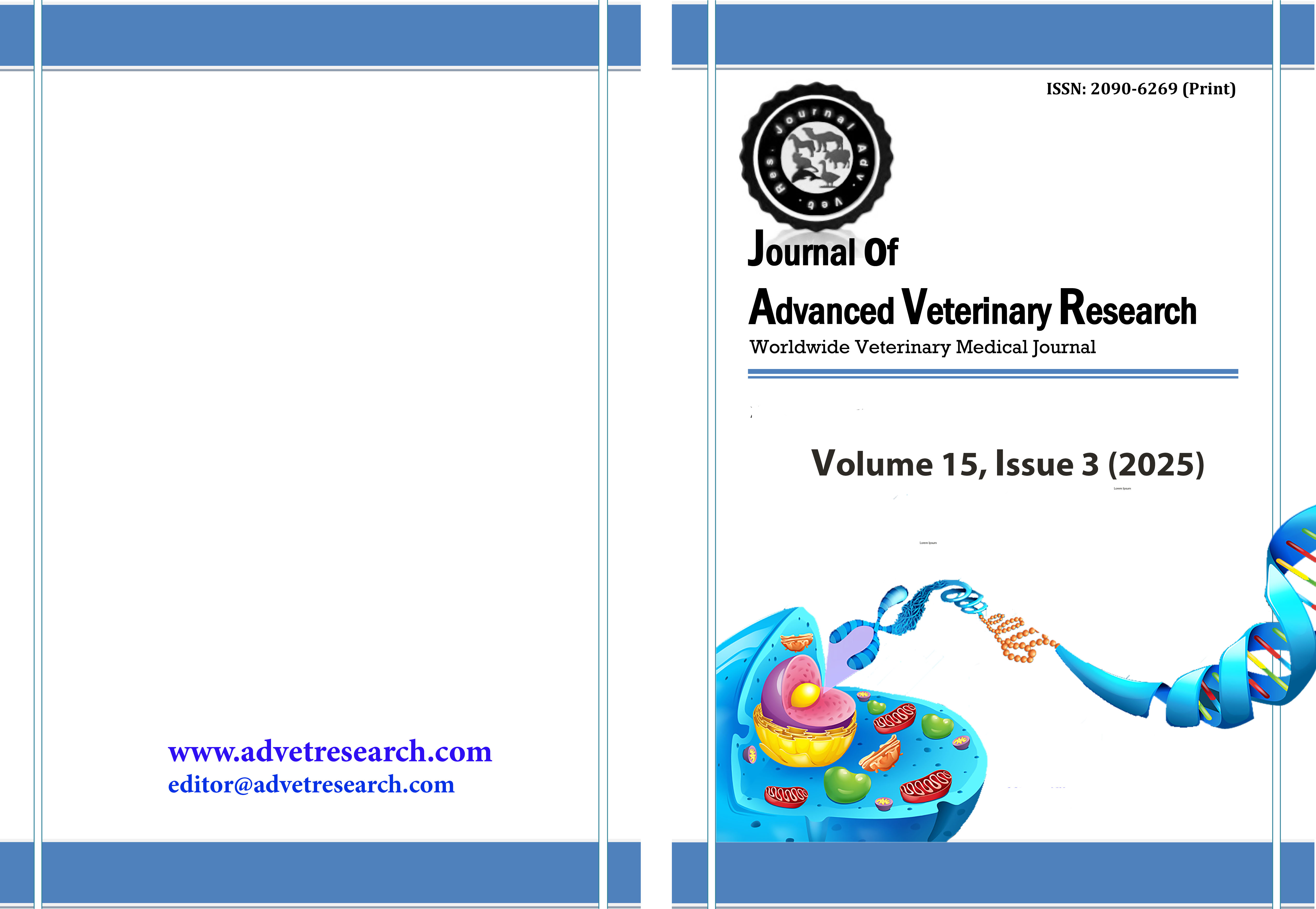Patterns of relapse in experimental Trypanosoma evansi infections: Evidence of resistance to widely used trypanocides in Egypt
Keywords:
Diminazene aceturate, Drug resistance, Egypt, Quinapyramine, Trypanocides, Trypanosoma evansiAbstract
The emergence of drug resistance and treatment relapse in Trypanosoma evansi infections poses a growing threat to animal health and productivity in endemic regions. Using a murine model, this study evaluated the in vivo efficacy of commonly used trypanocidal agents quinapyramine, diminazene aceturate, and melarsomine against Egyptian isolates of T. evansi. Eight experimental groups of Swiss albino mice were monitored over 60 days for parasitemia clearance and relapse following treatment at standard and double doses. The results revealed marked resistance to both quinapyramine and diminazene aceturate, as evidenced by early relapse and high mortality, even at elevated doses. In contrast, melarsomine (Cymelarsan) demonstrated superior efficacy, completely clearing parasitemia at a dose of 0.5 mg/kg with no relapse observed. Melarsomine is still a viable option for treating resistant T. evansi strains, according to the study, which also emphasizes relapse as a crucial sign of developing resistance. These findings underscore the urgent need for regular drug efficacy monitoring and reevaluation of treatment protocols in endemic settings.
Downloads
Published
How to Cite
Issue
Section
License
Copyright (c) 2025 Journal of Advanced Veterinary Research

This work is licensed under a Creative Commons Attribution-NonCommercial-NoDerivatives 4.0 International License.
Users have the right to read, download, copy, distribute, print, search, or link to the full texts of articles under the following conditions: Creative Commons Attribution-NonCommercial-NoDerivatives 4.0 International (CC BY-NC-ND 4.0).
Attribution-NonCommercial-NoDerivs
CC BY-NC-ND
This work is licensed under a Creative Commons Attribution-NonCommercial-NoDerivatives 4.0 International (CC BY-NC-ND 4.0) license




